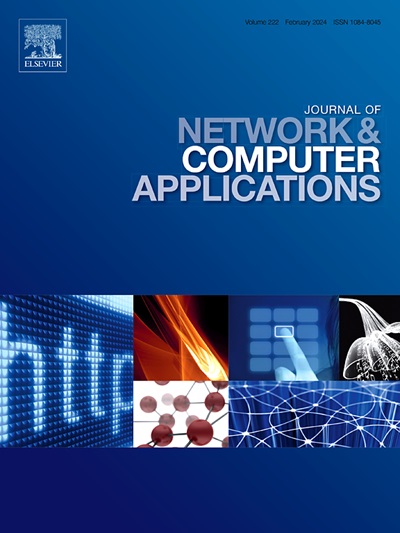LASeR: Lightweight and secure remote user authentication protocol for Internet of Drones
IF 8
2区 计算机科学
Q1 COMPUTER SCIENCE, HARDWARE & ARCHITECTURE
引用次数: 0
Abstract
The Internet of Drones has emerged as a new paradigm in academia and industry due to its clear advantages in multiple domains, including the military, smart cities, smart agriculture, and more recently, during the COVID-19 pandemic. Remote users are increasingly eager to access real-time information collected by drones in specific areas. However, the wireless communication used for information exchange between remote users and drones is vulnerable to various security challenges due to its open nature. Moreover, drones are constrained by limited energy and resources, which hinders the effective use of traditional cryptographic methods that involve high computational and communication costs. To address these challenges in IoD (Internet of Drones) environments, we propose a novel lightweight authenticated key agreement protocol, named LASeR, which ensures secure exchanges between users and drones. LASeR relies exclusively on Elliptic Curve Cryptography (ECC), bit-wise XOR operation, and one-way hash functions, thereby achieving a lightweight design. Our protocol not only verifies the authenticity of the user but also establishes a session key between the user and drone for encrypted communications. Security evaluations demonstrate that LASeR is resilient against various security attacks and meets essential security requirements, notably forward and backward secrecy. Furthermore, we show that LASeR imposes significantly lower computational and communication costs compared to other relevant protocols.
LASeR:用于无人机互联网的轻量级安全远程用户认证协议
无人机互联网因其在军事、智慧城市、智慧农业等多个领域的明显优势,以及最近在2019冠状病毒病大流行期间的优势,已成为学术界和工业界的新范式。远程用户越来越渴望获得无人机在特定区域收集的实时信息。然而,用于远程用户和无人机之间信息交换的无线通信由于其开放性,容易受到各种安全挑战。此外,无人机受限于有限的能源和资源,这阻碍了传统加密方法的有效使用,这些方法涉及高计算和通信成本。为了解决IoD(无人机互联网)环境中的这些挑战,我们提出了一种新的轻量级认证密钥协议,名为LASeR,它确保用户和无人机之间的安全交换。LASeR完全依赖于椭圆曲线加密(ECC)、逐位异或运算和单向哈希函数,从而实现了轻量级设计。我们的协议不仅验证了用户的真实性,而且在用户和无人机之间建立了一个会话密钥,用于加密通信。安全评估表明,LASeR具有抗各种安全攻击的弹性,满足基本的安全要求,特别是前向和后向保密。此外,我们表明,与其他相关协议相比,激光的计算和通信成本显着降低。
本文章由计算机程序翻译,如有差异,请以英文原文为准。
求助全文
约1分钟内获得全文
求助全文
来源期刊

Journal of Network and Computer Applications
工程技术-计算机:跨学科应用
CiteScore
21.50
自引率
3.40%
发文量
142
审稿时长
37 days
期刊介绍:
The Journal of Network and Computer Applications welcomes research contributions, surveys, and notes in all areas relating to computer networks and applications thereof. Sample topics include new design techniques, interesting or novel applications, components or standards; computer networks with tools such as WWW; emerging standards for internet protocols; Wireless networks; Mobile Computing; emerging computing models such as cloud computing, grid computing; applications of networked systems for remote collaboration and telemedicine, etc. The journal is abstracted and indexed in Scopus, Engineering Index, Web of Science, Science Citation Index Expanded and INSPEC.
 求助内容:
求助内容: 应助结果提醒方式:
应助结果提醒方式:


